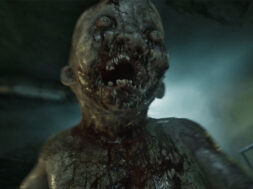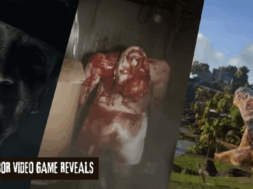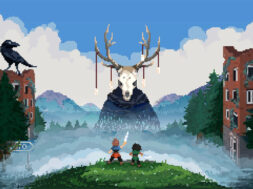The very first note in Bloodborne reads, “Seek the Paleblood to transcend the hunt.” Given the fact that hulking beasts roam the dreary Victorian streets, most people fixate on the hunt portion of that note. While this is representative of a lot of the experience of Bloodborne, it’s the word “transcend” that clues you in to the game’s true nature: a Lovecraftian tale of mankind experimenting with forbidden knowledge. Could they have shown their hand from the beginning and still drawn people in? Probably, but discovering this twist is such a wonderful feeling that’s integral to the experience, as well as being in line with the structure of many of Lovecraft’s stories.
There’s a distinct point in the game where the story starts to take a turn. In the beginning, it seems to be about a simple plague that turns villagers into violent creatures. You hunt them through the streets and into the woods until you stumble upon Byrgenwerth. Here you find even stranger creatures: a giant centipede-scorpion hybrid, a human-fly with a bulbous head covered in eyes and students seemingly melting into a puddle of goo.
The most jarring part of Byrgenwerth is the boss fight with Rom, The Vacuous Spider. After exploring the school and finding the head scholar immobile on a balcony, you dive off and transport into a brightly-lit lake that goes on forever. It’s a stunning image that contrasts harshly with the dimly-lit city and night-drenched forest you’ve been traversing thus far. When Rom shows up, she’s almost sad. Her giant body rolls around trying to attack while summoning meteors from the heavens and sending smaller spiderlings after you. It’s not the most fun boss fight in the game, but it is the first one that gives you the sense that there is something grander, more cosmic going on in Yharnam than you’re led to believe.

The phrase “eyes on the inside” becomes an important one to understanding the story of Bloodborne. In the fiction, it’s a colloquial way of talking about the game mechanic of insight (in-sight, get it?) and refers to being able to understand the incomprehensible nature of the universe. Much like in the work of Lovecraft, there is always something lurking just beyond our perception that would drive a normal person mad to discover. This knowledge is being researched by several parties throughout the game, all who have conflicting ideas about how to elevate mankind to their next stage of existence.
Eyes are an important symbol with a lot of the enemies and can help say a lot about the creature’s relationship with arcane knowledge. For example, the Witch of Hemwick takes the eye metaphor literally, removing eyes with a hooked tool, theoretically in an attempt to gain knowledge. Similarly, the description of the Accursed Brew item mentions the practice of forcibly searching the inside of a skull for eyes.
The Insight stat itself doesn’t seem to have any impact on the game early on. Some actions use it as a currency, but there are other more subtle things that it does as it goes up. The lanterns held by the Church Servants are revealed to be covered with glowing eyes, Mad Ones spawn in specific locations, and the giant Amygdalas show up hanging from the buildings in Yharnham. While it’s not called a “Sanity Meter” like in so many other games, it manages to capture the concept in a more Lovecraftian manner than other games.

One especially Lovecraftian enemy in the game is the Winter Lantern, which will cause your Frenzy Meter, another variant on sanity, to raise just by looking at it. So many Lovecraft protagonists end up losing their minds just by gazing upon some inhuman horror, making this the perfect type of monster for the theme. The more Insight your character has, the quicker a Winter Lantern will raise your Frenzy, reinforcing an idea of the genre: knowledge of the forbidden is dangerous.
My favorite part about Bloodborne is that while it explores all of these very Lovecraft-influenced ideas, it does so without using the mythology. Sure, there are lots of tentacled creatures or the occasional fish-man, but it never uses Cthulhu proper, despite the fact that it’s public domain and could have been used. In creating its own mythology, it’s able to explore the ideas of cosmic horror in its own ways that don’t come with the baggage of Lovecraft, making it so much more unique.

By not telling us about the cosmic horror story from the get-go, it gave players the experience of a Lovecraft protagonist’s, slowly unraveling mysteries around them while losing more of their mind in the process. This melds perfectly with the storytelling of the Souls games, forcing you to actively hunt down and piece together the information yourself. It’s the perfect combination of theme and genre, and while I don’t think I’d ever need to see an explicit sequel, I would love to see From Software do something similar again.









